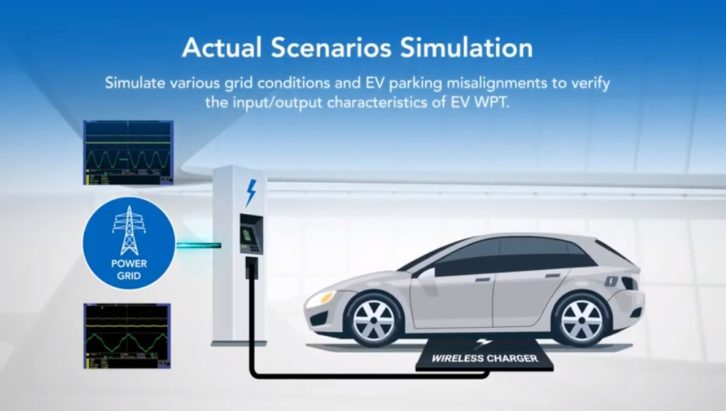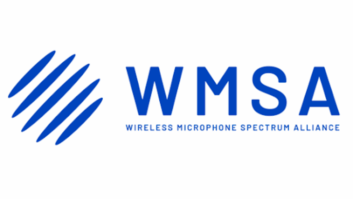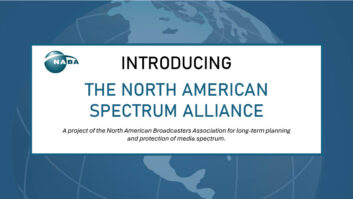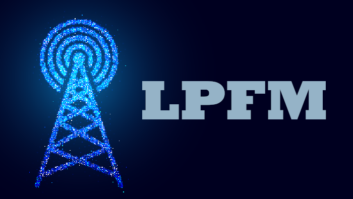Consumers are eager to cut the cord on their electronics charging devices, a trend that could soon benefit drivers of electric vehicles (EVs).
HD Radio developer and licensing company Xperi is seeking to raise awareness about a potential new threat to AM radio broadcast reception: the proposed introduction of wireless power transfer systems for electric vehicle charging, or WPT-EV, that use switching frequencies that generate harmonics in the lower AM band.
Xperi recently filed comments about this concern in response to a notice of inquiry at the FCC about radio receiver performance. It hopes to raise awareness and also believes its HD Radio technology can be of help.
Interference to AM from unintentional radiators including low-cost switching power supplies in EVs is a concern, even before the question of wireless charging comes into the discussion.
EV sales are rising across the globe, and the United States has set a lofty goal that half of new vehicles sold are to be electric by 2030, according to the National Association of Broadcasters. With that comes growing concern over noise on the AM band in EVs. The electromagnetic interference from EV motors to AM radio signals is well established, and some carmakers have pared AM radio from dashboards because of concerns over audio quality.
“Seemingly inexorable”
Now wireless EV charging systems are being proposed by several developers and being considered by international standard setting organizations.
“This topic has been heavily discussed within ITU [the International Telecommunication Union]. As WPT-EV engineers design more efficient ways to transmit power, the seemingly inexorable increase in AM-band noise floors can be expected to continue,” Xperi told the FCC.
The ITU is the United Nations specialized agency for information and communication technologies. In 2019 it reported on various wireless power transmission applications in use around the world.
The group noted the frequencies expected to be used for WPT for electric vehicle charging could affect a large number of radio services.
“The impact can be on the same frequency, adjacent frequencies or frequencies with larger separations,” ITU said.
The frequency range for those WPT systems are often around 85 kHz, according to ITU, which “does not overlap with any broadcasting band, and so it is only harmonic emissions from such systems that would have any impact. It may also be that harmonics are used in the power transfer process.”
But ITU wrote that WPT-EV is expected to produce harmonics in the bands 148.5-283.5 kHz, 525-1705 kHz and 2300–26100 kHz and can interfere with the reception of LF, MF and HF sound broadcasting.
Xperi in the past has been among those calling for better control overall of manmade electromagnetic interference. (It has also expressed concerns about LED lighting interfering with lower-level FM signals.)
The proposed wireless EV chargers provide no shielding from EMI, according to Xperi. EMI can be suppressed in EVs using mitigation techniques such as shielding cables and electric motors and installing filters, but that might not work in the case of wireless EV charging pads, according to Xperi officials.
Wireless charging uses the principle of electromagnetic induction to transmit electrical power through the air as a magnetic field, which allows car owners to cut the cord, according to Plugless Power, a developer of autonomous charging. The process is sometimes referred to as wireless inductive charging.
Nearly every electric car maker has plans for hands-free EV charging, according to observers familiar with developments in this area. EV buyers are already being given the option for built-in wireless charging.
Just how commonplace wireless EV charging might become is only limited by the imagination, according to some vehicle developers. One has described a future in which specific lanes on the freeway contain charging pads, over which EV vehicles drive to charge while in motion.

ITU interest
Ashruf El-Dinary, senior VP for radio technology solutions at Xperi, said the potential impact of noise from wireless charging has fallen under the radar in the United States.
“However, it’s being actively discussed within ITU and on a number of different fronts, from small chargers for phone and electronics but also on these larger concepts with wireless charging pads for the home or office and even the wireless changing networks built into streets for EV buses and other vehicles,” El-Dinary said.
“This is still a new industry that is growing. And with the Biden administration infrastructure plans to build out EV charging networks in place, the companies behind wireless charging are feeling empowered to put forward these new concepts looking for some regulatory help.”
El-Dinary and others believe FCC rules covering unintentional radiators should be given a role here. “Then ultimately any future technology would have to follow regulations under the FCC. They are in charge of protecting the AM band,” he said.
There are a number of the wireless charging technologies being proposed, El-Dinary said, any of which will affect AM broadcasters by potentially adding to the noise floor.
“Some of these are pretty high power, and in order to do that they need a higher modulation frequency for coupling. And it’s not so much the fundamental frequency, but the harmonics generated by the wireless charging systems that is a concern to many. Some of the reports are showing that noise is being generated up within 500, 600 and 700 kHz, which will have a direct impact on the lower end of the AM band.”
El-Dinary believes this isn’t so much an issue with shielding of the receiver in EVs but rather the radiation from the wireless charging systems being picked up by the antenna of the car, which is then directly coupled into the tuner.
He said the National Radio Systems Committee has started some paper studies and NAB is keeping abreast of the situation. “The radio broadcast industry needs to be aware of the wireless charging issue and watching developments closely,” El-Dinary said.
[Related: “DTS AutoStage Lands Four New Car Partners“]
Part 18
According to Bob Weller, senior VP for spectrum policy at NAB, the EV problem is not a doomsday scenario for AM but yet another step in the further erosion of AM broadcast quality and an example of the creeping noise floor threatening the senior band.
“We’ve told the FCC they need to address the growing noise floor, especially in the AM band. We’ve made specific recommendations to protect the AM band from Part 18 equipment, which in most cases include wireless charging systems. The rules are already very explicit that these devices have no spectrum rights. They are not allowed to interfere with licensed broadcasts,” Weller said.
It isn’t just car receivers that may suffer interference.
“It might be less of a threat to car receivers and an even a bigger concern to radios on the bedside table or other fixed receivers around the home,” Weller continued.
“Most often a car will be parked when being charged even with a wireless charger. Not too much listening happens in a parked car at the home or office,” he said. “But if eventually there are millions and millions of these wireless EV chargers, then it becomes more of a concern.”
Weller said government regulators are balancing consumers’ insatiable demand for wireless charging devices with the consequences of wireless charging on radio broadcasters.
“Consumers have expectations that everything can be wireless, and they want items to charge quickly. There will be interference issues with AM broadcasters if there are not adequate limits placed upon manufacturers of the wireless chargers at the manufacturing stage. Once a large number of these things are deployed, it will be too late to manage it.”
To further complicate things, Weller says FCC Part 18 rules do not limit power levels of wireless charging devices.
“Consumer charging systems are like 10 kW, which seems like a lot of power, but the proposed public transit wireless charging systems are ten times that. But the way we need to get at the interference issue is by limiting the level of the harmonics rather than the fundamental power,” he said.
[Related: “Why Are Some Automakers Ditching AM Radio?“]
Robust signal
Xperi believes its own technology can be of use with this issue and suggested that the FCC might want to consider a requirement that car radios have digital radios.
“The digital IBOC modulation used in the HD Radio system provides a significant level of noise immunity,” it wrote.
“As more radio stations convert to digital operations, a minimum product requirement including digital radio capabilities for car and portable AM/FM radio products will ensure continued efficient use of the AM/FM band and the services they provide.”
El-Dinary says all-digital AM operations offer increased signal robustness and additional protection from unintended radiators. “We have found that all-digital AM is very robust and the reception within EVs is that an all-digital station has excellent coverage while the equivalent AM analog terrestrial station is subject to interference from the car itself,” El-Dinary said.
Xperi says while it is possible for WPT-EV and LED interference to overcome digital broadcast signals under appropriate conditions, the “robust OFDM [orthogonal frequency division multiplexing] carriers, signal processing and forward error correction employed in the IBOC standard provide digital radio services with enhanced noise immunity.”
Radio World’s attempts to reach Ford and General Motors representatives for comment on the proposed wireless EV charging systems were unsuccessful.







